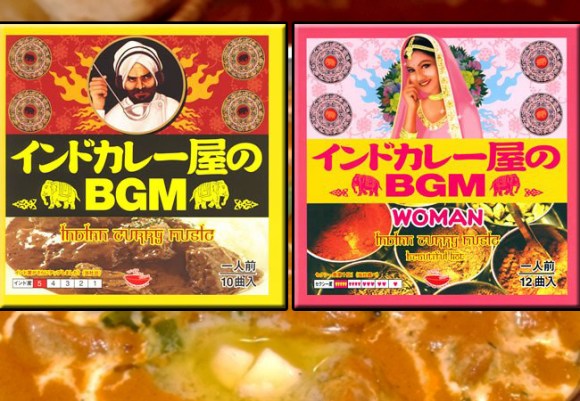
While most people associate curry with India, it might be surprising to learn that it is a big deal in Japan as well. “How big?” you ask?
■ Where curry is king
For those who have never been to Japan, it might comes as a surprise that Indian restaurants – or more specifically curry restaurants – are really popular. However, just staying one night in an urban area of the country will reveal how prevalent they are.
Restaurant cataloging website Tabelog lists 21,188 establishments selling curry in Japan, considerably more than there are places serving pasta (14,345) or okonomiyaki (17,382). It’s not hard to believe that these spiced dishes could almost be considered a “Japanese food” at this point considering there is such a wide range of curries and side dishes served in generous portions at reasonable prices.
■ And you may ask yourself, “How did it get here?”
Curry first made its way to Japan around the turn of the 19th century when Japan had opened its borders for easier international trade. Curry was indirectly introduced here by the British who had co-opted it from their then-colony of India. As such, there were some changes such as a lighter and sweeter taste, which caught on well in Japan.
▼ And the changes didn’t stop there…
The British curry, or “curry rice” (kareraisu) also referred to simply as “curry” or (kare), became a permanent fixture in Japanese society and opened the door for more authentic “Indian curry” (indo kare) restaurants to set up shop in the land of the rising sun. Although their curries are closer to home, they’ll still serve sweeter and milder variations that the people here have come to know and love.
However, whenever I ordered that kind of curry the South Asian waiter would usually laugh at me.
■ Come for the curry, stay for the ambiance
Indian curry restaurants are often small independent establishments and can also include shops run by people from Nepal, Bengal, or other South Asian countries. While these differences do bring some subtle variety to the flavor and decorations to these eateries, they all tend to be extremely similar to one another.
They all have the same color scheme which runs from mustard yellow to orange or brown. They are all adorned with posters and art from their native countries, and they all pipe in Indian music like that Panjabi MC song from a while back (the version without Jay-Z).
■ Indo Kareya No BGM
Whenever I visit one of these places the music always stands out for me. It’s a strange mix of feelings. I’m not really familiar with Indian music so on a whole it tends to sound alien to me, and yet I’ve gone to Indian curry restaurants enough times that these songs also feel very familiar.
I think a lot of Japanese people feel the same way, which is why Victor Entertainment released a series of CDs featuring the most frequently played songs in Indian curry restaurants in Japan. Different albums of Indian Curry Shop Background Music (Indo Kareya No BGM) contain different areas of Indian music such as Hold the Rice which highlights Indian classical music or Spicy with its more up-tempo and bass-heavy tracks possibly found in the more trendy curry places.
There’s also The Road to Maharaja which contains songs by superstar Rajinikanth.
A new edition, Indian Curry Shop Background Music: 2020 will be released on 21 September. It carries an updated track list of the songs that soak into our brains like so much sauce into the crevices of naan.
And so like pizza in America or McSpaghetti in the Philippines, a foreign flavor has become a deeply entrenched part of the Japanese culinary culture. And with the advent of curry shop CDs, who knows if eventually a way will be paved for Indian music or Bollywood to find a home here as well.
Stranger things have happened, as this website often attests to.
Source: NPR the salt (English), Tabelog 1, 2, 3, Hachima Kiko, Amass, Victor Entertainment (Japanese)
Curry Images © RocketNews24
Album Images: Amazon 1, 2, 3, 4, 5
Video: YouTube/Motivo Records, YouTube/Cinecurry Tamil

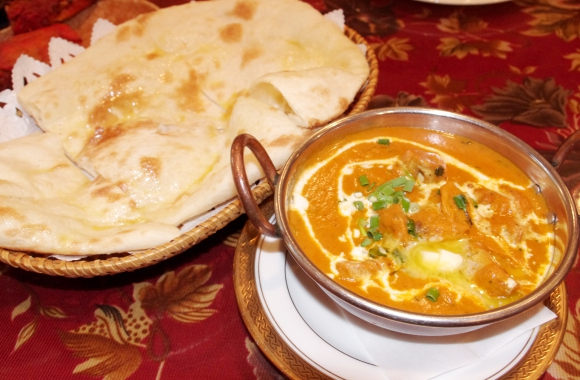
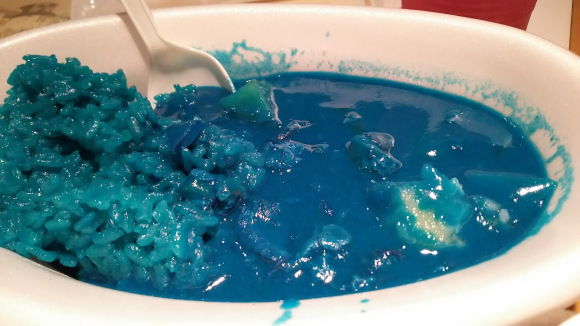
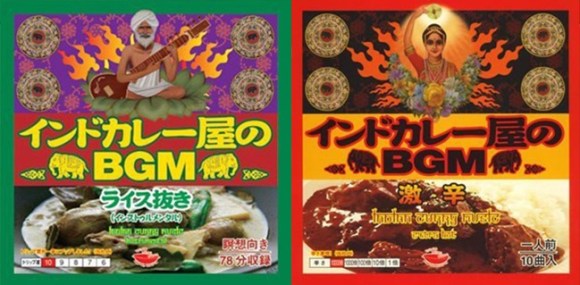
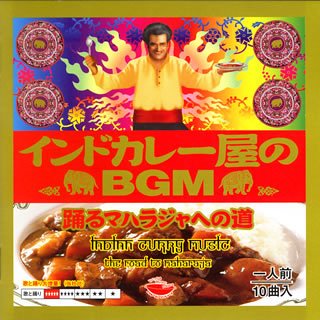
 Survey ranks the most popular Japanese curry dishes during winter
Survey ranks the most popular Japanese curry dishes during winter Curry restaurants across Japan create social media movement: “Don’t blame the curry!”
Curry restaurants across Japan create social media movement: “Don’t blame the curry!” Can you handle the heat? Japan’s one and only Curry College now enrolling new students
Can you handle the heat? Japan’s one and only Curry College now enrolling new students Taste testing 7-Eleven Japan’s five frozen curries to see which ones nail it
Taste testing 7-Eleven Japan’s five frozen curries to see which ones nail it English-language Reddit falls in love with curry restaurant– Can it win our taste tester’s heart?
English-language Reddit falls in love with curry restaurant– Can it win our taste tester’s heart? Japan’s new difficult-to-drink-from beer glass protects your liver, but it’s a brutal experience
Japan’s new difficult-to-drink-from beer glass protects your liver, but it’s a brutal experience New samurai glasses are Japan’s latest weird must-have souvenir
New samurai glasses are Japan’s latest weird must-have souvenir How to order snacks on a Shinkansen bullet train in Japan
How to order snacks on a Shinkansen bullet train in Japan Infographic shows how working culture differs across the globe
Infographic shows how working culture differs across the globe New Pokémon ice cream, dessert drinks, and cool merch coming to Baskin-Robbins Japan【Pics】
New Pokémon ice cream, dessert drinks, and cool merch coming to Baskin-Robbins Japan【Pics】 Caffeinated ramen for gamers that you can eat with one hand going on sale in Japan
Caffeinated ramen for gamers that you can eat with one hand going on sale in Japan New Nintendo Lego kit is a beautiful piece of moving pixel art of Mario and Yoshi【Photos】
New Nintendo Lego kit is a beautiful piece of moving pixel art of Mario and Yoshi【Photos】 To combat declining birth rate, Japan to begin offering “Breeding Visas” to foreigners
To combat declining birth rate, Japan to begin offering “Breeding Visas” to foreigners Demon Slayer: Kimetsu no Yaiba gets new roller coaster attractions and food at Universal Studios Japan
Demon Slayer: Kimetsu no Yaiba gets new roller coaster attractions and food at Universal Studios Japan High-fashion Totoro cuddle purse is like an elegant stroll in the forest【Photos】
High-fashion Totoro cuddle purse is like an elegant stroll in the forest【Photos】 Nintendo history you can feel – Super NES, N64, and GameCube controllers become capsule toys
Nintendo history you can feel – Super NES, N64, and GameCube controllers become capsule toys Hello, cosmetics! Clinique teams up with Hello Kitty this summer for first-time collaboration
Hello, cosmetics! Clinique teams up with Hello Kitty this summer for first-time collaboration “The most Delicious Cup Noodle in history” – Japan’s French Cup Noodle wins our heart【Taste test】
“The most Delicious Cup Noodle in history” – Japan’s French Cup Noodle wins our heart【Taste test】 Starbucks releases a cute Frappuccino and Unicorn Cake…but not in Japan
Starbucks releases a cute Frappuccino and Unicorn Cake…but not in Japan Kyoto Tower mascot termination reveals dark side behind cute Japanese characters
Kyoto Tower mascot termination reveals dark side behind cute Japanese characters McDonald’s Japan’s Soft Twist Tower: A phantom ice cream only sold at select branches
McDonald’s Japan’s Soft Twist Tower: A phantom ice cream only sold at select branches Yabai Ramen: What makes this Japanese ramen so dangerous?
Yabai Ramen: What makes this Japanese ramen so dangerous? Finally! Nintendo Japan expands Switch 8-bit controller sales to everybody, Online member or not
Finally! Nintendo Japan expands Switch 8-bit controller sales to everybody, Online member or not Japanese government wants to build luxury resorts in all national parks for foreign tourists
Japanese government wants to build luxury resorts in all national parks for foreign tourists 10 things you should buy at 7-Eleven in Japan
10 things you should buy at 7-Eleven in Japan Studio Ghibli releases anime heroine cosplay dresses that are super comfy to wear
Studio Ghibli releases anime heroine cosplay dresses that are super comfy to wear Woman charged for driving suitcase without a license in Osaka
Woman charged for driving suitcase without a license in Osaka Studio Ghibli unveils My Neighbour Totoro miniature house model
Studio Ghibli unveils My Neighbour Totoro miniature house model Kyoto experiencing problems with foreign tourists not paying for bus fares, but not on purpose
Kyoto experiencing problems with foreign tourists not paying for bus fares, but not on purpose Fighting mild hunger with a Japanese soda that turns into jelly in the stomach【Taste test】
Fighting mild hunger with a Japanese soda that turns into jelly in the stomach【Taste test】 Studio Ghibli’s Howl’s Moving Castle tapestry unveiled in Japan for first time
Studio Ghibli’s Howl’s Moving Castle tapestry unveiled in Japan for first time McDonald’s new Happy Meals offer up cute and practical Sanrio lifestyle goods
McDonald’s new Happy Meals offer up cute and practical Sanrio lifestyle goods Sales of Japan’s most convenient train ticket/shopping payment cards suspended indefinitely
Sales of Japan’s most convenient train ticket/shopping payment cards suspended indefinitely Sold-out Studio Ghibli desktop humidifiers are back so Totoro can help you through the dry season
Sold-out Studio Ghibli desktop humidifiers are back so Totoro can help you through the dry season Japanese government to make first change to romanization spelling rules since the 1950s
Japanese government to make first change to romanization spelling rules since the 1950s Foreigner’s request for help in Tokyo makes us sad for the state of society
Foreigner’s request for help in Tokyo makes us sad for the state of society Ghibli founders Toshio Suzuki and Hayao Miyazaki contribute to Japanese whisky Totoro label design
Ghibli founders Toshio Suzuki and Hayao Miyazaki contribute to Japanese whisky Totoro label design Doraemon found buried at sea as scene from 1993 anime becomes real life【Photos】
Doraemon found buried at sea as scene from 1993 anime becomes real life【Photos】 Tokyo’s most famous Starbucks is closed
Tokyo’s most famous Starbucks is closed Princesses, fruits, and blacksmiths: Study reveals the 30 most unusual family names in Japan
Princesses, fruits, and blacksmiths: Study reveals the 30 most unusual family names in Japan 2021’s top stories in Japanese food and cooking news【SoraNews24 Year in Review】
2021’s top stories in Japanese food and cooking news【SoraNews24 Year in Review】 The U.K. thinks Japanese curry is katsu curry, and people aren’t happy about it
The U.K. thinks Japanese curry is katsu curry, and people aren’t happy about it The best Japanese curry in Japan isn’t eaten at a restaurant
The best Japanese curry in Japan isn’t eaten at a restaurant All-plant-based katsu curry arrives at Ikea Japan
All-plant-based katsu curry arrives at Ikea Japan Curry-filled chocolates are here! It’s the taste you never knew you wanted
Curry-filled chocolates are here! It’s the taste you never knew you wanted Is McDonald’s Japan’s new tandoori chicken curry McNugget sauce better with naan?【Taste test】
Is McDonald’s Japan’s new tandoori chicken curry McNugget sauce better with naan?【Taste test】 Curry bread not getting enough love in Japan, recruits girls and its own association
Curry bread not getting enough love in Japan, recruits girls and its own association Celebrities slam katsu curry, divide netizens: “It’s a dish where 1+1 never actually makes 2”
Celebrities slam katsu curry, divide netizens: “It’s a dish where 1+1 never actually makes 2” Japan’s favorite curry rice restaurant teams up with convenience store for Super Spicy Curry Buns
Japan’s favorite curry rice restaurant teams up with convenience store for Super Spicy Curry Buns Sushi Dai and other famous restaurants from Tsukiji fish market open at new Toyosu location
Sushi Dai and other famous restaurants from Tsukiji fish market open at new Toyosu location No time to cook? No problem! Three easy ways to improve instant curry
No time to cook? No problem! Three easy ways to improve instant curry Tokyo’s Haneda Airport comes out with handy “Walking Curry” for those on the go
Tokyo’s Haneda Airport comes out with handy “Walking Curry” for those on the go Pork or beef? A peek into how Japan’s curry preferences change from place to place
Pork or beef? A peek into how Japan’s curry preferences change from place to place Curry-nai! Legendary X Japan story births new line of instant curry
Curry-nai! Legendary X Japan story births new line of instant curry We try Ajinomoto’s European Chicken Katsu Curry Style frozen gyoza that has no katsu in it
We try Ajinomoto’s European Chicken Katsu Curry Style frozen gyoza that has no katsu in it
Leave a Reply